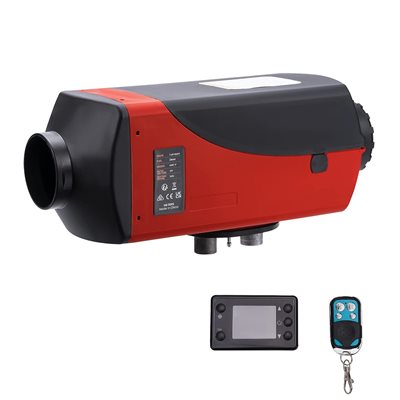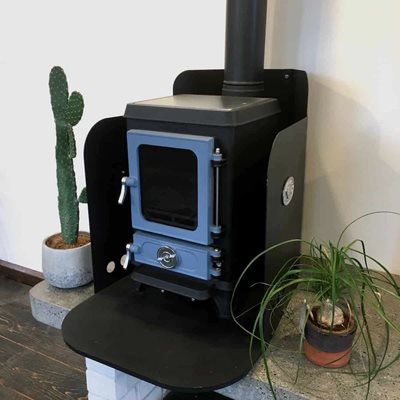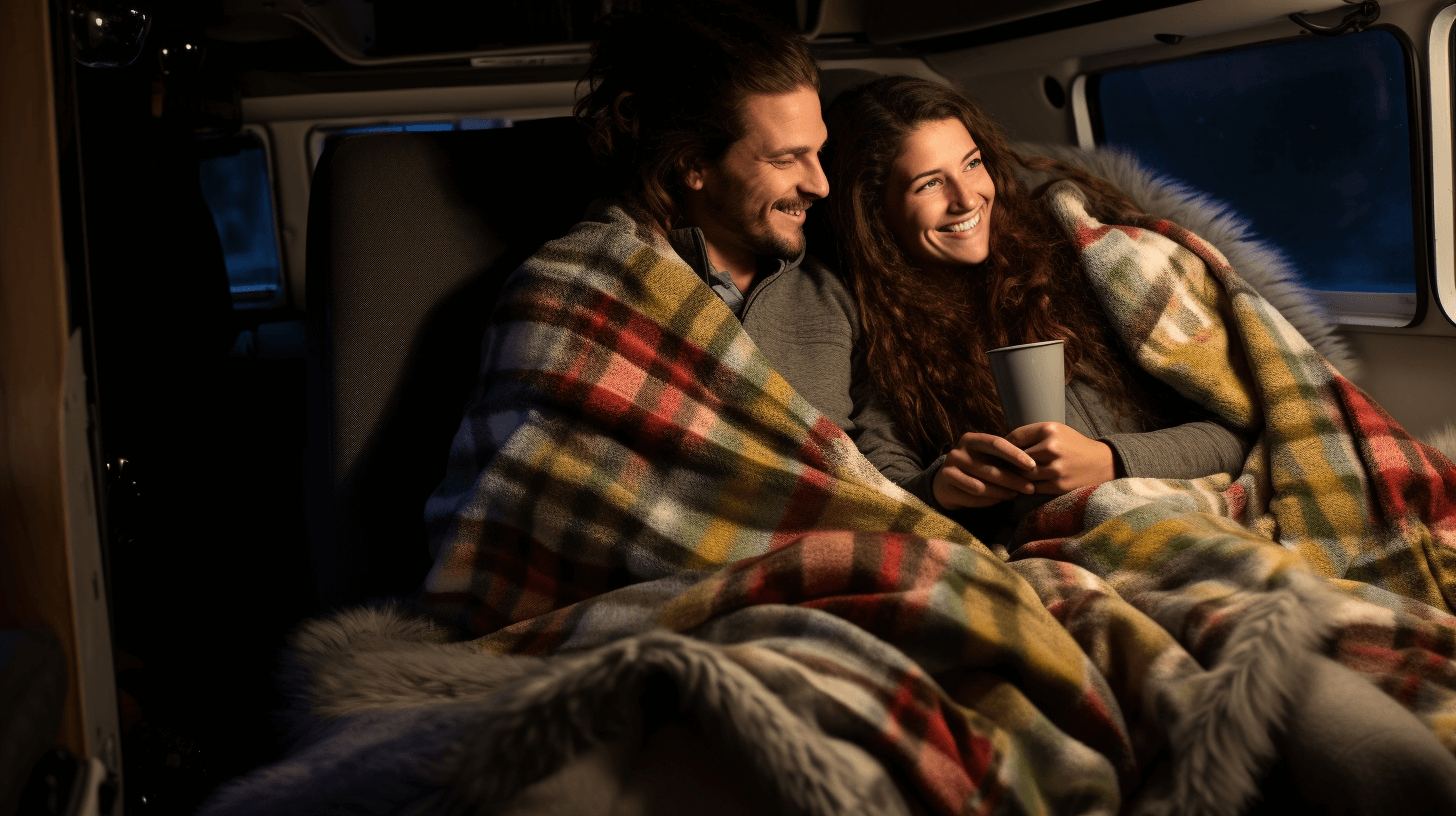Staying Warm in a Campervan: Essential Tips
- What are the best ways to stay warm in a campervan?
- Understanding the UK Autumn and Winter
- Choosing the Right Campervan
- Size
- Insulation
- Heating
- Insulating Your Campervan
- Heating Systems for Campervans, Motorhomes/RVs
- Diesel Heaters:
- Propane Heaters:
- Electric Heaters:
- Wood Burning Stoves:
- Portable "Buddy" Heaters:
- Appropriate Bedding and Clothing
- Managing Ventilation and Condensation
- Food and Hydration
- Choosing the Right Campsite
- Look for campsites with electric hook-ups
- Check the facilities
- Check you have reliable heating before wild camping
- Look for campsites in sheltered locations.
- Dealing with Water Systems in Cold Weather
- Fresh Water Tank
- Water Pipes
- Drain the Water System
- Enjoying the Outdoors
- Additional Tips for Comfort and Warmth
- Conclusion
What are the best ways to stay warm in a campervan?
The best ways to stay warm in a campervan during the UK's coldest months are to insulate your van, use a heater or electric blanket, dress in layers, use thermal curtains or window coverings, and park in sheltered areas. Additionally, using hot water bottles and drinking warm beverages can help keep you cosy.
Staying warm in a campervan in the UK during the autumn and winter months can be challenging. The colder temperatures can make staying comfortable and enjoying your adventure difficult. However, with the proper preparation and equipment, staying warm and cosy in your campervan throughout the colder months is possible.
Insulation is one of the most important things to consider when staying in a campervan during the autumn and winter. Proper insulation, including flooring, can help to keep the heat inside the van and prevent it from escaping. This can be achieved using insulating materials such as foam or fibreglass insulation. It is also important to ensure that there are no gaps or leaks in the van that could allow cold air to enter.
Another important factor to consider is heating. Various heating options are available for campervans, including propane heaters, diesel heaters, and electric heaters. Each option has pros and cons, and choosing the option that best fits your needs and budget is important. It is also important to ensure that heating equipment is properly installed and maintained to prevent safety hazards.
Understanding the UK Autumn and Winter
 Autumn and winter in the UK can be chilly and wet, with temperatures dropping to as low as 0°C. The days are shorter, and the nights are longer, which means you need to be prepared for the colder months. Understanding the weather patterns and preparing accordingly can help you stay warm and comfortable in a campervan. Choosing the right clothes, can either make or break a winter adventure. Here are some of our tips:
Autumn and winter in the UK can be chilly and wet, with temperatures dropping to as low as 0°C. The days are shorter, and the nights are longer, which means you need to be prepared for the colder months. Understanding the weather patterns and preparing accordingly can help you stay warm and comfortable in a campervan. Choosing the right clothes, can either make or break a winter adventure. Here are some of our tips:
The UK experiences mild temperatures during autumn, with occasional rain and wind. The leaves on the trees start to change colour, and the daylight hours start to decrease. It is a good time to enjoy the beautiful countryside and the autumn colours, but it is also important to pack warm clothing and blankets to stay cosy.
As winter approaches, temperatures drop, and snow and ice become more common. The UK experiences various weather conditions, from heavy rain to freezing temperatures, so preparing for all eventualities is important. The winter months in the UK can be long and dark, so it is crucial to have enough warm clothing, bedding, and a winter sleeping bag to keep you comfortable. Thankfully for your wallet, you don’t need to be looking at the sleeping bags at the top end of the market because they’re for extreme temperatures. But find yourself a sleeping bag that is made specifically for use in winter when temperatures drop below freezing.
It is also worth noting that the UK has a humid climate, which means that even when the temperature is not very low, it can feel much colder due to the high moisture levels in the air. This can make it challenging to stay warm, but with proper insulation and heating, you can make your campervan a cosy and comfortable home during the colder months, including the UK's coldest months. You shouldn’t let the colder climate stop you from enjoying a trip that’s packed full of adventure. If you’re looking for other ways to keep warm, we have all the information needed to help your camper be extra cosy this winter and to safeguard that the frost doesn’t stop you from having a very comfortable staycation this time of year.
In summary, autumn and winter in the UK can be challenging, but with the right preparation and equipment, you can stay warm and comfortable in your campervan. Always pack warm clothing, bedding, and heating equipment, and keep an eye on the weather forecast to stay safe and comfortable.
Choosing the Right Campervan
When it comes to staying warm in a campervan during the Autumn and Winter months in the UK, choosing the right campervan is crucial. Here are a few things to consider when selecting a campervan:
Size
The size of the campervan is an important factor to consider. A larger campervan may be more comfortable and provide more space for storage, but it may also be more difficult to manoeuvre and park. A smaller campervan may be easier to drive and park but may not provide as much space for living and sleeping. The vehicle's overall size won't have much impact on the warmth, as although larger vehicles have more space to heat, they also have more space for thicker insulation and larger heaters.
Insulation
Insulation is key to keeping warm in a campervan during colder months. Look for a campervan with good insulation in the walls, floor, and ceiling. This will help to retain heat and keep the interior of the campervan warm.
Heating
Having a reliable heating system is essential for staying warm in a campervan during Autumn and Winter. Look for a campervan with a heating system that is easy to use and efficient. Some campervans have a built-in heating system, while others require a separate heater or stove.
Insulating Your Campervan
Insulating your campervan is one of the most important things you can do to stay warm during the Autumn and Winter months. Without proper insulation, heat will escape quickly, making it difficult to maintain a comfortable temperature inside the van.
There are several ways to insulate your campervan, including using foam board, insulation tape, and reflective insulation. Foam board is popular because it is easy to install and provides excellent insulation. Insulation tape is another option that can be used to seal gaps and prevent heat loss. Reflective insulation is designed to reflect heat back into the van, making it an effective way to keep the van warm.
In addition to insulation, it is important to consider the windows in your campervan. Windows are a major source of heat loss, so it is important to cover them with curtains or blinds. Curtains can be made from various materials, including thick fabric or insulated material.
Some purpose-built vehicles have double-glazed windows with a vacuum or gas between the panes to prevent heat loss and/or the influx of cold. If you are converting your vehicle, we recommend installing double-glazed additional windows; they are worth the extra cost if you are going to be in either cold or hot climates.
Another way to keep your campervan warm is to add a carpet to the floor. A carpet will help to insulate the van and prevent heat from escaping through the floor. Additionally, it will provide a comfortable surface to walk on and help to reduce noise.
Insulating your campervan is essential for staying warm during the colder months. You can create a comfortable and cosy environment inside your van by using a combination of insulation, curtains, and carpet.
Looking for new ideas for your campervan?
Check out our full "A-List" of of award-winning products
Heating Systems for Campervans, Motorhomes/RVs
Navigating the varied terrain of mobile living often presents unique challenges, not least of which is maintaining a comfortable interior temperature. Understanding onboard heating systems' intricacies is indispensable with the exponentially growing campervan, RV, and motorhome community. This comprehensive guide will dissect the pros and cons of each type of heating for campervans, RVs, and motorhomes, including the efficient circulation of warm air to keep occupants cozy during the UK's coldest months.
Diesel Heaters:
Pros:
- Efficacy: Diesel heaters deliver because of their high calorific value, providing uniform and intense warmth.
- Cost-Effective: Diesel is an affordable fuel option in various locales, spelling significant savings for long-term travellers.
- Sustainability: With impressive durability, diesel heaters typically require infrequent maintenance.
Cons:
- Installation: Fitting a diesel heater can be intricate, often necessitating expert intervention.
- Environmental Impact: These heaters, while improved, still release certain pollutants. Proper ventilation is essential to circumvent potential health hazards.
- Audibility: Some models have a distinct operational sound, which can detract from the serenity of the outdoors.
Propane Heaters:
- Instant Heat: Propane heaters are known for their rapid heat generation, ensuring immediate warmth.
- Portability: Many propane models are lightweight and easy to transport.
- Availability: Propane is readily available, making refills convenient.
- Ventilation Concerns: Burning propane produces water vapour, leading to condensation issues inside a closed space.
- Safety: There's a risk of gas leakage, emphasizing the importance of regular checks and ensuring proper storage.
- Consumption: Propane is used fairly quickly, meaning frequent refills, especially in colder climates.
Electric Heaters:
- Clean Operation: Electric heaters emit no fumes, making them eco-friendly.
- Ease of Use: Plug in, switch on, and enjoy the warmth.
- Variable Settings: Many models allow users to adjust heat settings, tailoring the environment to precise needs.
- Power Dependency: These heaters rely on an electrical source, so they're not ideal for off-grid adventures without adequate battery systems.
- Efficiency: Electric heaters may be less effective in extremely cold conditions than their diesel or propane counterparts.
- Energy Consumption: Prolonged use can deplete onboard batteries or necessitate frequent stops at powered campsites.
Wood Burning Stoves:
- Ambience: Few heaters provide the rustic charm and cosy feel of a real wood-burning stove.
- Renewable Fuel: Wood is a renewable resource, and in some areas, it can be gathered freely.
- Potent Heat Source: Properly maintained, these stoves can produce substantial heat.
- Maintenance: Wood-burning stoves require regular cleaning to prevent creosote buildup.
- Space Requirements: They typically need more space due to safety concerns, clearances from flammable materials, and a chimney!
- Fuel Storage: Keeping dry wood on hand can occupy valuable storage space in a compact RV or campervan.
Portable "Buddy" Heaters:
- Mobility: As the name suggests, these heaters can easily be moved to where heat is most needed.
- Safety Features: Most models have tip-over protection and low-oxygen shut-off systems.
- Versatility: Suitable for both indoor and outdoor use, extending their utility.
- Limited Heating Capacity: While efficient, their heating range might not cover larger interior spaces fully.
- Fuel Dependency: Many rely on small propane canisters, which can run out quickly during continuous use.
- Placement Constraints: Due to safety concerns, placement needs careful consideration to avoid close contact with flammable items.
Appropriate Bedding and Clothing
 Staying warm in a campervan during the colder months is all about appropriate bedding and clothing. Having the right gear to keep you warm and comfortable throughout the night is important.
Staying warm in a campervan during the colder months is all about appropriate bedding and clothing. Having the right gear to keep you warm and comfortable throughout the night is important.
When it comes to bedding, blankets and a sleeping bag are essential. Layering blankets can help trap heat and keep you warm. A good quality sleeping bag with a low-temperature rating is also important. Look for a sleeping bag that is rated for at least 0°C.
Wool is a great material to use when staying warm in a campervan. It's a natural insulator and can help regulate body temperature. Consider using wool blankets or a wool sleeping bag liner, although it can be slow to dry if it is accidentally caught outside.
Layering clothing is key to staying warm in a campervan. Start with a base layer of thermal material, such as merino wool or synthetic fabrics. Add layers of clothing, such as a fleece or down jacket, to trap heat.
Don't forget about your feet! Woollen socks and insulated slippers can help keep your feet warm and comfortable. Gloves and hats are also important to keep extremities warm.
Regarding bedding and clothing, it's important to invest in quality gear. Look for items that are designed for cold weather and made of high-quality materials. With the right gear, staying warm in a campervan during the Autumn and Winter months can be a comfortable and enjoyable experience.
Managing Ventilation and Condensation
Proper ventilation is essential when staying warm in a UK campervan during autumn and winter. Condensation can build up without proper ventilation, leading to dampness and mould growth. Here are a few tips for managing ventilation and condensation:
- Open windows or vents: Opening a window or vent, even just a crack, can help circulate air and prevent condensation.
- Use a dehumidifier: A dehumidifier can help to remove excess moisture from the air, reducing the likelihood of condensation forming.
- Avoid drying clothes inside: Drying clothes inside can add moisture to the air, leading to condensation. Instead, try to dry clothes outside or in a laundromat.
- Use an extractor fan: If your campervan has an extractor fan, use it when cooking or showering to help remove excess moisture from the air.
- Insulate your campervan: Proper insulation can help to regulate the temperature inside your campervan, reducing the likelihood of condensation forming.
By following these tips, you can help manage ventilation and condensation in your campervan, ensuring a warm and comfortable stay during the colder months in the UK.
Food and Hydration
Staying warm in a campervan during Autumn and Winter requires proper food and hydration. Eating high-calorie foods and drinking warm liquids can help maintain body temperature and hydrate the body.
Packaging non-perishable foods like canned soups, stews, and chilli that can be easily heated up on a portable stove is recommended. Instant oatmeal, hot chocolate, and tea bags are also great options for warm drinks.
In addition to food, staying hydrated is crucial for staying warm. Drinking plenty of water is important, but warm beverages like tea and hot chocolate can also help keep the body warm.
Another useful tip is to use a hot water bottle to keep warm. Filling up a hot water bottle with hot water and placing it on the stomach or feet can provide warmth and comfort.
Packaging warm foods and drinks, staying hydrated, and using a hot water bottle can help keep campervan travellers warm and comfortable during the colder months.
Choosing the Right Campsite
When it comes to staying warm in a campervan during the Autumn and Winter months, choosing the right campsite is essential. Here are some tips to help you find the perfect spot:
Look for campsites with electric hook-ups
Electric hook-ups are a must-have if you want to stay warm in your campervan. They allow you to plug in a heater to keep your van warm and toasty throughout the night. Look for campsites that offer electric hook-ups, and make sure your van is equipped with the necessary cables and adapters.
Check the facilities
When choosing a campsite, it's important to check the facilities. Look for sites with heated shower blocks, toilets, and laundry facilities. This will ensure that you can stay clean and warm throughout your stay.
Check you have reliable heating before wild camping
Wild camping can be a great way to stay overnight if you're feeling adventurous. However, it's important to do your research and ensure you're allowed to camp in your chosen area. Make sure you follow the rules and leave no trace.
Look for campsites in sheltered locations.
When choosing a campsite, looking for a sheltered location is important. This will help protect your van from the wind and keep it warmer. Look for sites that are surrounded by trees or hills or that are located in a valley.
Dealing with Water Systems in Cold Weather
When camping in a campervan during the Autumn and Winter in the UK, it is important to take care of the water systems to prevent freezing and damage. Here are some tips to keep the water systems functional:
Fresh Water Tank
During cold weather, keeping the fresh water tank as full as possible is recommended to minimize the amount of air in the tank. This will help prevent the water from freezing and damaging the tank.
Water Pipes
Water pipes are the most vulnerable part of the water system in cold weather. To prevent freezing, insulating the pipes with foam insulation or pipe sleeves is important. This will help keep the water flowing and prevent damage to the pipes.
Drain the Water System
When not using the campervan for an extended period, it is important to drain the water system completely. This will help prevent any remaining water from freezing and causing damage to the water system.
In summary, taking care of the water systems in a campervan during the Autumn and Winter in the UK is crucial to prevent damage and ensure functionality. Keeping the fresh water tank full, insulating the water pipes, and draining the water system when not in use are some key tips to remember.
Run the heating every night to ensure the internal temperature doesn't drop below zero!
We publish 2 new posts a week, so follow us on Facebook to stay up-to-date
Want new vanlife guides and the best hidden spots in the UK?
Enjoying the Outdoors
When camping in a campervan during autumn and winter in the UK, it's important to make the most of the outdoors while staying warm. Even though the weather may be chilly, there are still plenty of activities to enjoy.
One option is to take advantage of the sun when it's out. On clear days, the sun can provide much-needed warmth, so it's important to position the campervan in a spot with plenty of sun exposure. This can also help with keeping the campervan warm during the day.
Another activity to enjoy is walking. The UK has many beautiful walking routes that can be enjoyed year-round. It's important to dress appropriately for the weather, with layers and waterproof clothing, to stay comfortable and warm. Walking during the sunset can also provide stunning views and a unique experience.
For those looking for a more unique outdoor experience, the northern lights can be viewed in certain parts of the UK during winter. It's important to research the best locations and times to view the northern lights, as well as to dress warmly and bring appropriate equipment for viewing.
Overall, there are many ways to enjoy the outdoors while camping in a campervan during autumn and winter in the UK. By taking advantage of the sun, going for walks, and viewing unique natural phenomena like the northern lights, campers can stay warm and have a memorable experience.
Additional Tips for Comfort and Warmth
Aside from the basic tips mentioned earlier, there are additional ways to keep warm and comfortable in a campervan during the colder months in the UK. Here are some suggestions:
Use rugs: Rugs are a great way to add extra insulation to the floors of your campervan. They can also make the space feel more cosy and comfortable. Look for rugs made from natural materials like wool or cotton for the best insulation.
Invest in a good quality sleeping bag: A good quality sleeping bag is essential for staying warm during cold nights. Look for a sleeping bag with a temperature rating that is appropriate for the conditions you will be camping in. Consider investing in a sleeping bag liner for added warmth.
Use hot water bottles: Hot water bottles are a simple and effective way to keep warm in bed. Fill them up with hot water before you go to sleep, and place them at your feet or in your sleeping bag to keep you warm throughout the night.
Wear warm clothing: It may seem obvious, but it is one of the easiest ways to stay warm in a campervan. Wear layers and wear a hat, gloves, and warm socks to keep your extremities warm.
Use a portable heater: If you have access to electricity, a portable heater can be a great way to warm up your campervan. Look for a heater with a thermostat and automatic shut-off for safety.
By following these additional tips, you can stay warm and comfortable in your campervan during the colder months in the UK.
Conclusion
Staying warm during Autumn and Winter camping trips in a campervan is essential for a comfortable and enjoyable experience. With the right preparation and equipment, staying warm and cosy even on the coldest of nights is possible.
When planning a winter camping trip, it is important to consider the weather conditions and pack accordingly. Warm clothing, blankets, and a good sleeping bag are essential items to bring along. It is also important to insulate the campervan to prevent heat loss and use any heating options available.
During the trip, staying active and moving to generate body heat is important. Hot drinks and warm meals can also help to keep the body warm from the inside out.
Van life during the winter months can be challenging but also rewarding. With the right preparation and mindset, enjoying the season's beauty while staying warm and comfortable is possible.
If in doubt, your home is mobile - drive South every day, and head across the Channel if you can - the UK temperatures will be far from your mind when you're enjoying Winter temperatures in the South of the European mainland, especially France and Spain!

Rebecca Wills
1k FollowersSelf-professed vanlifer, digital nomad, blogger and freelance web developer. My van in the UK and my mobile home in the US aren't just places I live, they're my roving offices allowing me to work whilst giving me access to spaces that inspire me and feed my sense of adventure.
More posts by Rebecca Wills